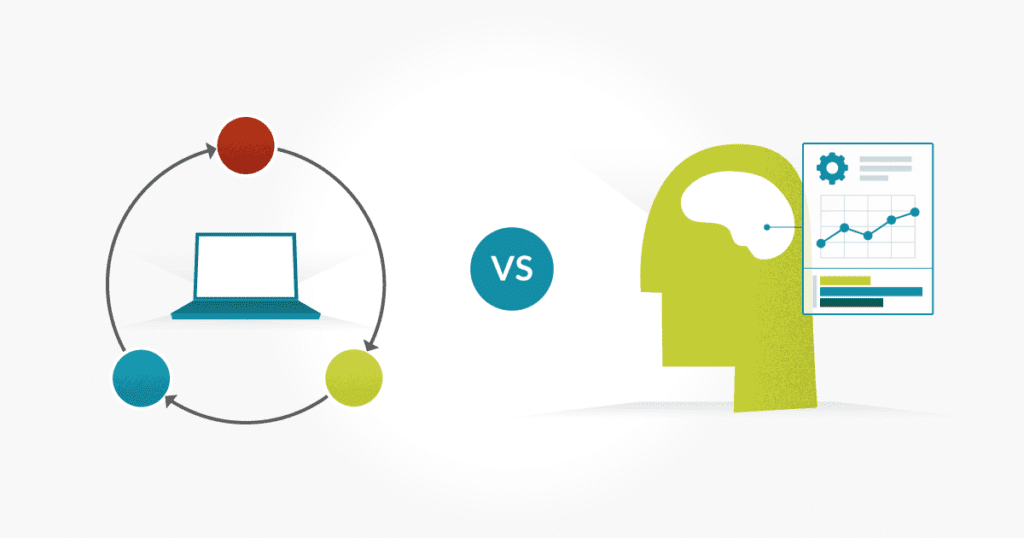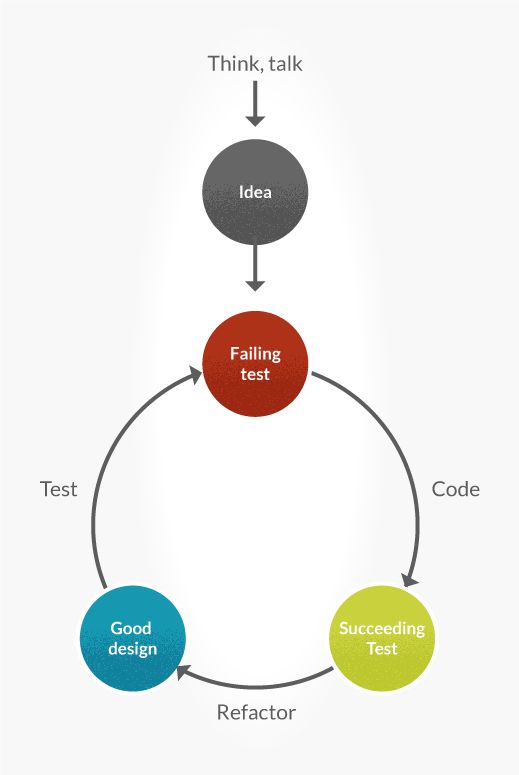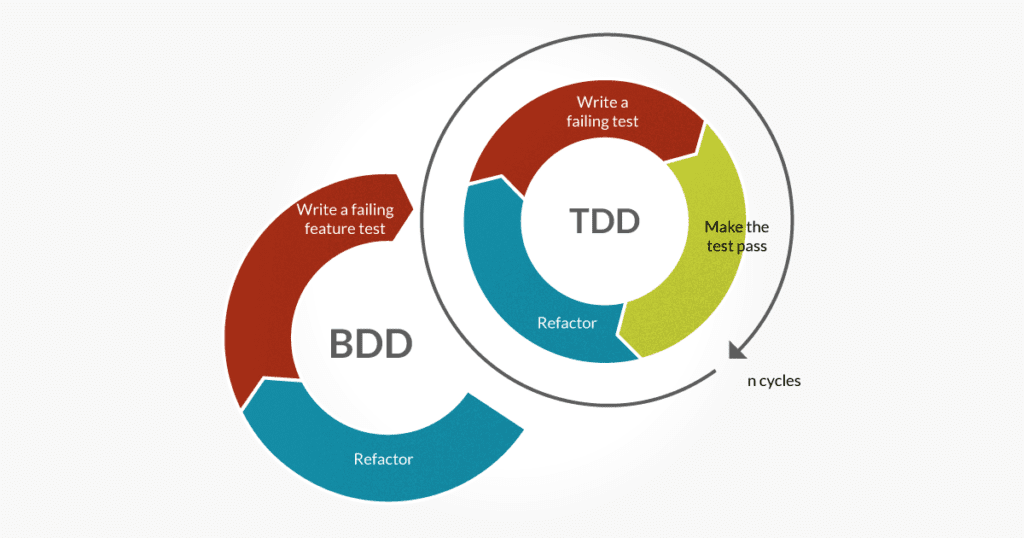They sound similar, and it’s easy to get them confused, but how do we unravel TDD vs BDD? In TDD (Test Driven Development), how well the functionality conforms is checked by a written test case. As the code evolves, the original test cases can give false results. BDD (Behavior Driven Development) is also a test-first approach but differs by testing the system’s actual behavior from the end-users perspective.

Test Design
Test writing takes place ahead of the code in both TDD and BDD. Writing tests first helps predict the course of development, which ultimately prevents any cases from being missed from the code or functionality. Both methods are concerned with locating bugs, and they also act as concrete documentation of what the test coverage aims to achieve.
Test Method
Tests are programmed within these approaches, which calls for strong coding skills. Programming allows them to be automated for later use.
Workflow
Workflow is as straightforward as the illustration below shows. In planning, the team thinks, discusses, and comes up with ideas. The ideas become tests, but the first test is designed to be expected to fail. The code is then rewritten to enable the test to pass. Once the test has passed, the code is refactored further until the best design eventually emerges. This newly refactored code continues to be under test until design finalization.

What’s the Difference Between TDD and BDD?
“What are you testing for?” is a great question to ask. Are you testing to figure out the behavior of the application? Or are you more interested in the implementation? When people ask what’s the difference between TDD and BDD, this question is often the main discussion point. In TDD, you have a test method that will assert some states, but these tests may give false results as the system evolves. But in BDD, you are looking at behavior, such as what will happen to this system under certain conditions.
A simplified difference between TDD and BDD are expressed below:
“In TDD, I’m not concerned about the output. The only thing needed is to carry out the test in a particular way.”
“In BDD, I don’t mind how you come up with the output, except the output has to be correct under the given condition.”
Communication and Feedback
BDD has the edge over TDD in communication and feedback. Since the behavior descriptions in BDD are given in plain, descriptive English, your clients can understand the tests so they can send feedback more quickly. These more accessible communication lines allow you to incorporate their feedback, which can further improve the software’s tests and design. In TDD, only skillful programmers will understand the test, which limits communication with the wider audience, but this method will deliver a higher quality code.
TDD vs BDD again, but in simpler words:
In BDD, you will come across a better specification since communication between the software developer and the product owner is fast and easy.
TDD may lack the ability to specify exact behavior, but you achieve higher quality with software code.
Writing Failing Tests vs. Writing Failing Feature Tests
As discussed, both approaches start with writing a failing test and then picking it up from there. In BDD, tests satisfy both the developer and customer, but in TDD, the test is designed to satisfy a developer-only and their code. As seen below, BDD works over TDD, which makes implementing TDD a better approach. So you can never say that BDD and TDD are entirely two different things.

Summary
Although we say BDD is a better approach, we must not forget that BDD has evolved from TDD to eliminate the shortfalls of TDD. In practice, there is no harm in implementing both methods – one to support the quality of the code the developer writes, the other to help the system’s behavior as defined by the product owner.
About the writer
Jithin Nair
Jithin Nair is an experienced Lead QA Engineer with a global product development and consulting company, and a regular contributor to TestLodge
All Jithin Nair's articles
